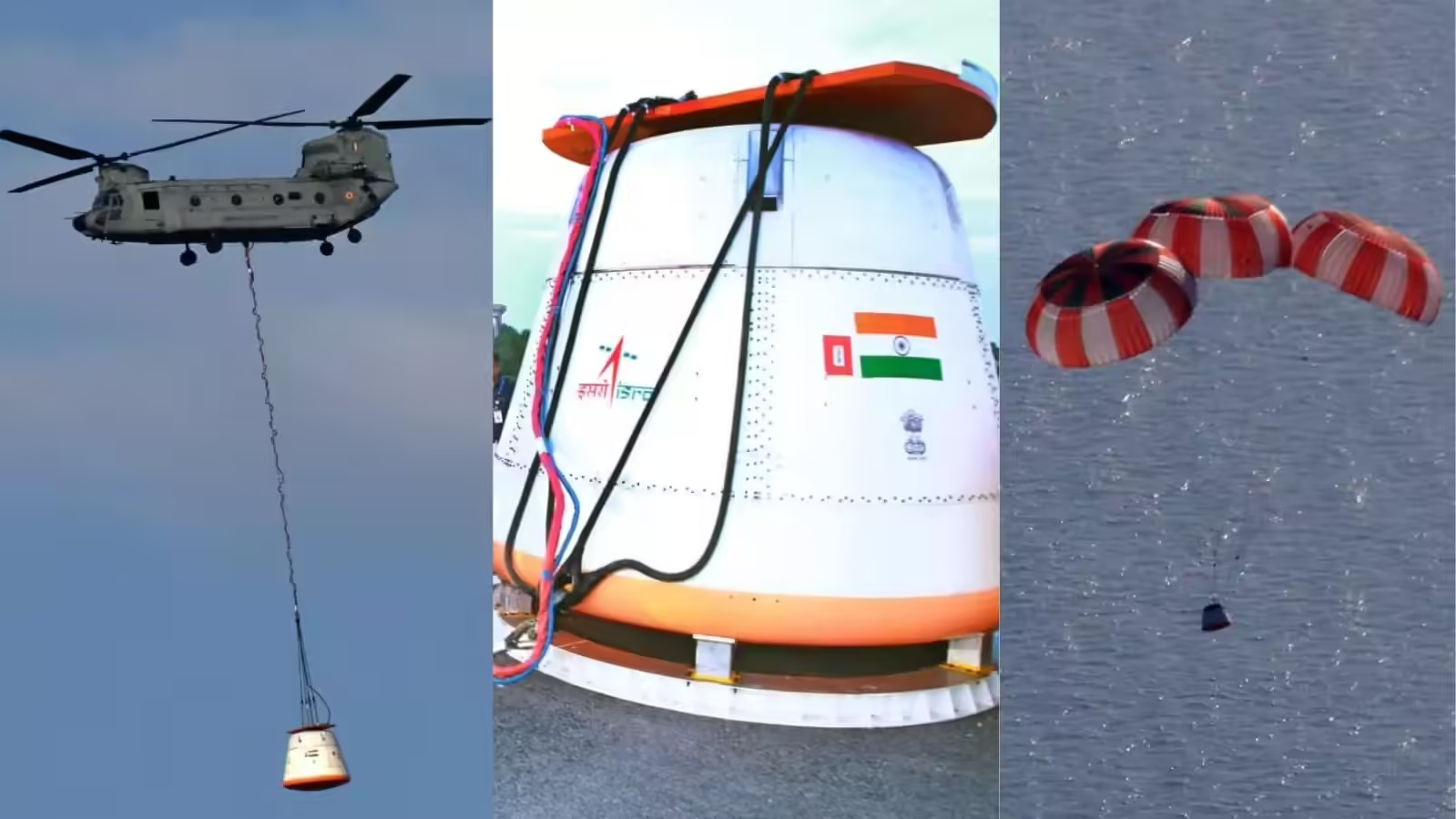

In a significant step towards India's first human spaceflight mission, the Indian Space Research Organisation (ISRO) has successfully conducted a crucial air drop test. The trial validated the performance of the complex parachute system designed to ensure the safe return of the Gaganyaan crew module to Earth.
The test, known as the Integrated Air Drop Test (IADT-01), is a vital part of the Gaganyaan program's safety validation process. The parachute system is essential for slowing down the crew module after it re-enters the Earth's atmosphere, allowing for a controlled and safe landing. The successful demonstration was a collaborative effort involving the Indian Air Force, DRDO, the Navy, and the Coast Guard.
During the test, a mock-up of the crew module was released from an aircraft. The entire parachute deployment sequence, from the initial extraction to the activation of the main parachutes, functioned perfectly, guiding the module to a safe descent. This successful trial gives ISRO greater confidence as it moves into the final stages of preparation.
The Gaganyaan mission is a landmark project for India. The first uncrewed test flight is scheduled for December this year, with the historic manned mission planned for 2028. This will make India only the fourth country in the world to have its own crewed spaceflight capability. The mission plans to send a three-member crew into an orbit of about 400 km for up to three days. This successful test is a major confidence booster, proving that the mission's critical safety systems are on the right track.